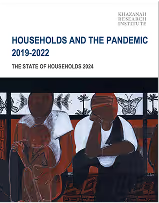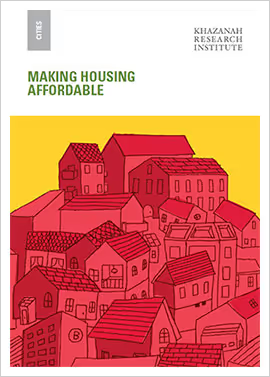
The Case for Rental Housing
The idea that rental can be a major policy axis in addressing our housing conundrum seems counter-intuitive when we have such a high home ownership rate, reinforced by policy and programmes that promote and prioritize ownership over rental.
Census data show that Malaysia’s home ownership rate is at 72.5% in 2010, higher than Australia (68.1%), UK (67.4%) and US (66.5%). The rate goes up to 76.1% according to the Household Income and Basic Amenities Survey in 2014 (HISBA 2014). Those who rent are only 19% of total households.
But rental becomes more important as urbanization rate goes up, inclusion increases in priority and labour market becomes nimbler.
The highly-urbanized state of Selangor (91.4% urban) and the Federal Territory of Kuala Lumpur (100% urban) have 27.6% and 33.4% share of households renting, clearly higher than the national share of 19%.
This corresponds to global housing tenure patterns elsewhere. New York metropolitan area has a rental share of 49.6% in 2016 and London has slightly more than half at 50.5% in 2011. Berlin, of course, is the epitome of a renting city at 85.8% in 2014.
Rental takes on an even more important role from an inclusive standpoint. Poor and low-income households tend to rent more than high-income households. According to HISBA 2014, 21.5% of poor households rent. Coupled with the urban dimension, the figure jumps to 41.8% - this means that almost half of the urban poor households rent. And we have not included the low-income and vulnerable groups that make up the larger bottom 40% income group.
It is common for lower income groups to trade-off quality for affordability in choosing their rental homes. Disaggregating housing and transportation data by subgroup and income will enable more complex analysis of trade-offs between rental location, housing quality and transportation costs.
Rental also enhances job mobility, which very often implies locational flexibility that a mortgage would not give. Promoting rental in cities as an interconnected inclusive and labour market strategy is a good start.
To do this, we need data on existing and planned rental housing stock to gauge adequacy of supply. We need better understanding on the trajectories from social renting to home ownership. Constant rent indices disaggregated at different geographical scales can be used to monitor rental affordability.
But the general paucity of data and the lack of disaggregation of published numbers are obstacles to researching rental housing.
For example, the Household Expenditure Survey 2014 (HES 2014) shows that the average monthly rental paid by households is very low at RM128.52 or only 3.59% of total household expenditure. Even for urban households, where rental spending is conjectured to be higher, they spend only an average of RM157.62 per month or 4.02% of total household expenditure. These rental rates are as low as the subsidized rental rates for public housing projects which range between RM124 and RM300 depending on location and other criteria.
So, what gives?
A possible explanation for this is that the Department of Statistics have included all households (owner-occupiers and tenants) in the denominator in deriving the average monthly rental spent. The HES is admittedly formulated according to international concepts and guidelines, which is useful to establish consistency in calculation across expenditure subgroups. But for research aimed at understanding the burden of rental affordability, using only tenants to calculate average rental would provide a better understanding of expenditure levels and patterns.
In short, we need better data to guide policy-making and the design of programmes and interventions in the rental housing sector. It broadens the type of policy options and instruments at our disposal in addressing our housing challenge.
However, beyond ensuring affordability, achieving a vibrant and inclusive rental housing sector requires additional measures. This includes establishing a formal market for private rental, putting in place incentives to attract investments and providing security of tenure. These measures support the National Housing Policy to enhance capability and accessibility of people to own or rent (emphasis own) houses.
In creating an inclusive society and sustaining a dynamic, nimbler workforce amidst greater urbanization, we may need to tip the tenure scale towards renting in balancing the gamut of affordable housing programmes that currently lean towards home ownership schemes.















